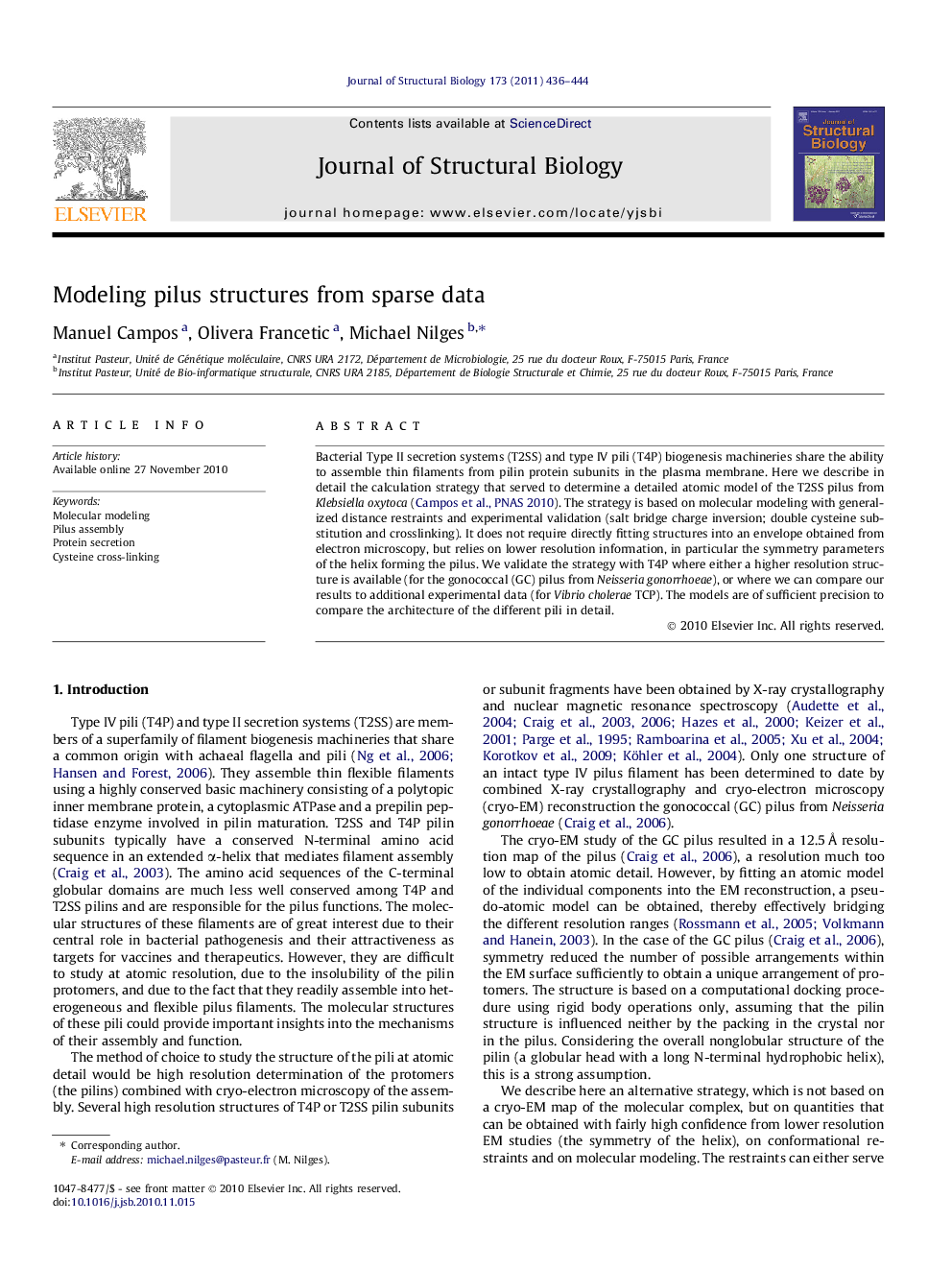| Article ID | Journal | Published Year | Pages | File Type |
|---|---|---|---|---|
| 5914821 | Journal of Structural Biology | 2011 | 9 Pages |
Bacterial Type II secretion systems (T2SS) and type IV pili (T4P) biogenesis machineries share the ability to assemble thin filaments from pilin protein subunits in the plasma membrane. Here we describe in detail the calculation strategy that served to determine a detailed atomic model of the T2SS pilus from Klebsiella oxytoca (Campos et al., PNAS 2010). The strategy is based on molecular modeling with generalized distance restraints and experimental validation (salt bridge charge inversion; double cysteine substitution and crosslinking). It does not require directly fitting structures into an envelope obtained from electron microscopy, but relies on lower resolution information, in particular the symmetry parameters of the helix forming the pilus. We validate the strategy with T4P where either a higher resolution structure is available (for the gonococcal (GC) pilus from Neisseria gonorrhoeae), or where we can compare our results to additional experimental data (for Vibrio cholerae TCP). The models are of sufficient precision to compare the architecture of the different pili in detail.
